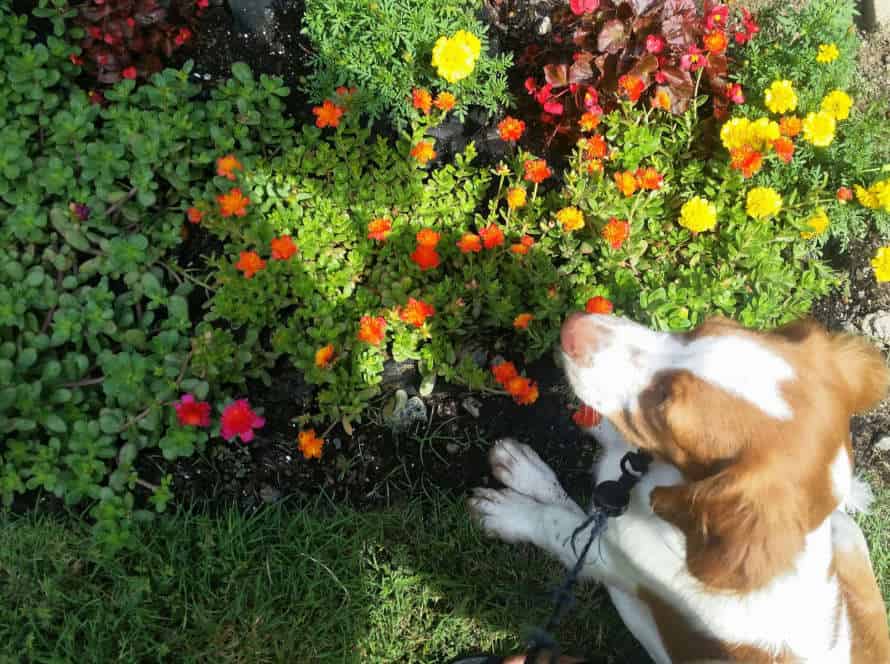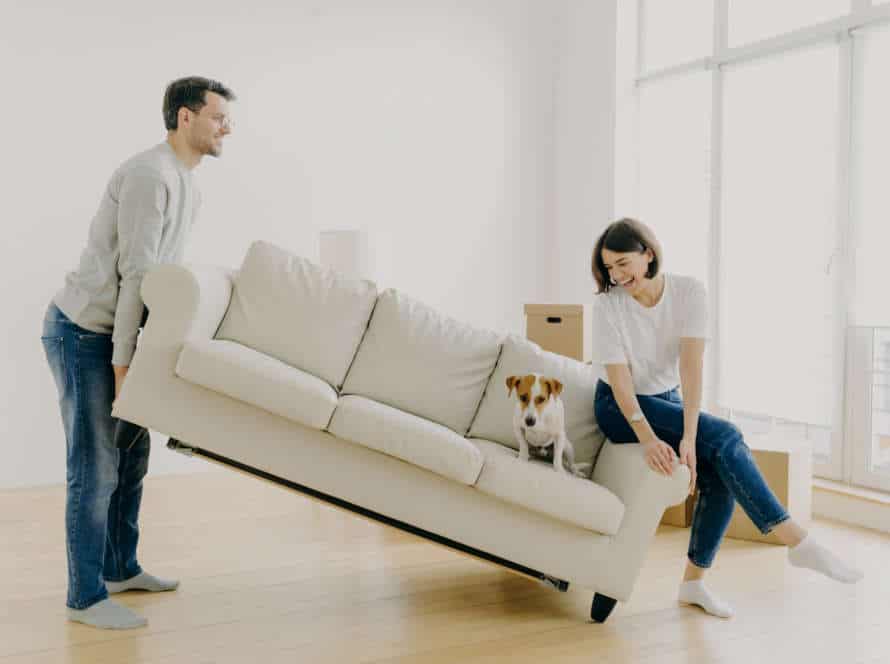Is It Separation Anxiety or Just Bad Behavior?
Separation anxiety and bad behavior are two different things. Separation anxiety is a behavioral disorder where animals experience distress when apart from their owners or attachés. Bad behavior has no anxiety attached and is just undesirable conduct.
Here are ways to tell them apart:
- Look at the behavior in totality.
- Check their body language – panting, drooling, whining.
- Watch for destructive tendencies – chewing, tearing, digging.
Diagnosing and treating separation anxiety can be tough and may require professional help.
Remember: If you think your pet has separation anxiety, chat with your vet. Check for medical conditions that could be causing distress.
Understanding Separation Anxiety
Separation anxiety is a behavioural issue. It can affect animals and humans alike! It is an emotional reaction to being away from a special attachment figure (like a parent, guardian, or companion).
Reactions could range from mild to severe. Examples of behaviour include crying, barking, pacing, destruction, and even aggression.
Let’s dive deeper into understanding separation anxiety.
Causes of separation anxiety in dogs
Separation anxiety in dogs is a common condition. It causes destructive behavior when your dog is left alone. There are several causes for this:
- Change in routine – This can be a trigger if your dog’s daily routine changes suddenly.
- Lack of socialization – Puppies not exposed to different people or environments may develop separation anxiety.
- Traumatic event – If a dog has been through trauma, like a car accident, abuse, or abandonment, it could lead to anxiety.
- Breed disposition – Certain breeds, such as Labradors, German Shepherds, and Cocker Spaniels, are more prone to it.
It’s important to find out what is causing your dog’s separation anxiety. This helps you understand its severity and take the right steps to help. Separation anxiety is not bad behavior. Pet owners should train their dog and give reassurance.
Symptoms of separation anxiety in dogs
Separation anxiety is a typical behavior problem in dogs and can be tricky to distinguish from other behavioral issues. Here are some specific signs to watch out for:
- Loud barking or howling when left alone
- Chewing, digging or other destructive behavior when left alone
- Peeing/pooping in the house, even if house-trained
- Trying to escape or hurting itself when left alone
- Restlessness or pacing when left alone
These behaviors could easily be misconstrued as misbehavior, but if they happen regularly when the dog is left alone, it is probably because of separation anxiety. The right diagnosis and treatment will help improve your dog’s behavior and quality of life.
How to diagnose separation anxiety in dogs
Is your pup distressed when you’re not around? It might be separation anxiety! Here are the tell-tale indicators:
- Destructive behaviour like chewing furniture or digging holes.
- Excessive barking, howling, or whining.
- Trying to escape or break out of crates, doors, or windows to follow you.
- Peeing or pooping inside the house while alone.
If these signs appear only when you’re away, it’s likely your dog has separation anxiety. Talk to a veterinary or a dog behaviorist for help!
Addressing Separation Anxiety
Separation anxiety in dogs can lead to various issues. Such as, barking excessively, chewing destructively, soiling and urinary difficulties. To manage these behaviours, it’s important to understand the cause and handle it correctly. This article will cover different ways to tackle separation anxiety in pooches.
Management strategies for separation anxiety
Separation anxiety in pets is a common issue. But, it can be managed with some simple strategies. Here are some management strategies for separation anxiety:
- Gradual desensitization: Start with short periods of being alone and slowly increase.
- Practice departures: Do things that show you’re leaving, like picking up keys. Then stay. It will help your pet adjust.
- Provide entertainment: Get them plenty of toys, puzzle feeders and treats.
- Exercise: Before leaving, make sure they’ve had physical playtime to burn energy.
- Reward good behavior: Give them treats, praise and affection when they stay calm. It will reinforce good behavior.
With some patience, separation anxiety can be managed.
Medications for Separation Anxiety
Separation anxiety is a worrying behavior in dogs. It is caused by fear or distress when they are away from their owner or someone they have formed a bond with. Training and behavior modification are the best methods to tackle this issue, but medications can also help to reduce anxiety and bring a state of relaxation.
Common medications used for separation anxiety in dogs are:
- Selective serotonin reuptake inhibitors (SSRIs), which are antidepressant medications. They can raise serotonin levels in the brain, which has a positive effect on mood, and can reduce anxiety.
- Benzodiazepines, which are anti-anxiety medications. They can reduce fear and anxiety by calming the central nervous system.
- Tricyclic antidepressants (TCAs), which can balance chemical imbalances in the brain and reduce fear and anxiety.
Remember: Meds for separation anxiety should only be prescribed and administered by a vet. They should always be used alongside behavior modification and training to treat the root cause of the anxiety.
Training Techniques for Separation Anxiety
Separation anxiety is typical in pups. But it’s key to recognize if your pup has separation anxiety or if they’re just misbehaving. This condition can cause destruction, barking/whining, and even self-harming in serious cases.
Training methods are useful for treating separation anxiety in dogs. Here are some efficient methods:
- Desensitization and counterconditioning – Teach your pup to connect being alone with positive experiences, by gradually increasing the time away and rewarding them when they behave.
- Interactive toys – Give interactive toys for the pup to play with when you’re away. This aids to distract from loneliness.
- Separation anxiety training with professional help – Professional trainers can help to customize techniques to your pup’s individual needs.
It’s essential to tell the difference between separation anxiety and bad behavior to use the right techniques and enhance the dog’s life.
Identifying and Addressing Bad Behavior
Wanting to determine the cause of disruptive or destructive pet behavior can be tricky. Separation anxiety and bad behavior may seem similar, yet it is essential to tell them apart.
In order to find a suitable solution, this section will explain how to recognize and handle bad behavior in pets.
Common forms of bad behavior in dogs
Dogs make great pets, but they can display bad behavior. Types of bad behavior can include:
- Chewing furniture, shoes, and other items.
- Digging yards and gardens.
- Barking or growling excessively at people and animals.
- Jumping on people and furniture.
- Aggressive behavior to other dogs.
Separation anxiety is a form of bad behavior that needs attention. This can be caused by lack of training or attention. It’s important to identify the cause of the bad behavior and address it with proper training, exercise, and if needed expert help.
Routine and positive reinforcement is essential for a happy pup. So train and engage your dog in healthy activities to control bad behavior.
Remember: a well-exercised and trained dog is a happy dog!
Reasons behind bad behavior in dogs
Dogs can act badly for a number of reasons. It’s vital that dog owners uncover the source of the behavior.
Here are three common ones:
- No socialization – Dogs not socialized may show aggression to people or other dogs.
- Separation anxiety – This includes barking, destruction, and peeing/pooping in the house while their owner is away.
- Health issues – If a pup is in pain/uncomfortable, they may become more aggressive or bark more.
As an owner, it’s important to know why your pup is behaving this way. Expert help may be needed.
Tip: Patience, consistency, and positive reinforcement are the keys to fixing bad behavior.
Techniques to Address Bad Behavior in Dogs
Addressing bad behavior in dogs is essential. Separation anxiety and bad behavior may seem similar, but need various tactics.
Separation anxiety may result in destructive behaviors like chewing, howling, peeing in wrong places, and trying to escape. To tackle this, create a safe area for your pooch, get them used to solitude, and consider consulting a vet or a dog trainer.
Bad conduct may also be caused by boredom, lack of training, and other environmental issues. Training, reinforcement, mental stimulation, and environmental modifications like toys and a dedicated spot can help correct bad behavior.
Recognizing the cause of your pup’s bad behavior is crucial to picking the right strategy to tackle it efficiently.
Frequently Asked Questions
1. What is separation anxiety in dogs?
Separation anxiety in dogs is a condition where a dog experiences extreme distress when left alone or separated from their owner.
2. How do I know if my dog has separation anxiety?
If your dog exhibits excessive vocalization, destructive behavior, urination/defecation, pacing, or attempts to escape when left alone, they may have separation anxiety.
3. Can separation anxiety be treated?
Yes, separation anxiety can be treated through counterconditioning, desensitization, and medication in severe cases.
4. Can bad behavior be mistaken for separation anxiety?
Yes, bad behavior such as chewing or destroying items may be mistaken for separation anxiety if it only occurs in the owner’s absence. However, if the behavior also occurs when the owner is present, it is likely just bad behavior.
5. How can I prevent my dog from developing separation anxiety?
To prevent separation anxiety, gradually teach your dog to be comfortable with being alone by leaving for short periods of time and gradually increasing the duration. Provide plenty of stimulation and exercise to prevent boredom.
6. Can separation anxiety be serious?
Yes, separation anxiety can be a serious condition that can lead to injury, self-harm, or severe distress in the dog. It’s important to seek help from a veterinarian or behaviorist if you suspect your dog has separation anxiety.







